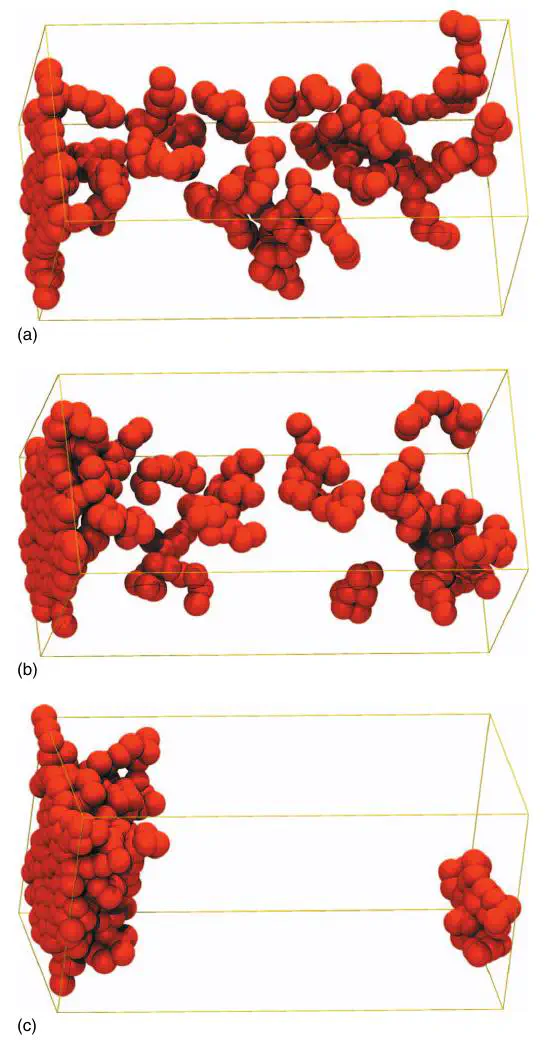Solvent Effects in Polyelectrolyte Adsorption: Computer Simulations with Explicit and Implicit Solvent
 Image credit: G. Reddy
Image credit: G. Reddy
Abstract
The adsorption of strongly charged polyelectrolyte chains to an oppositely charged planar surface is studied using computer simulation. In addition to an explicit solvent model, two implicit solvent models are considered : one where the solvent induces an implicit Lennard-Jones (ILJ) interaction between polymer sites and one where the solvent induces a many body interaction that depends on the solvent accessible surface area (SASA) of the monomers. Molecular and Brownian dynamics simulations are reported for the explicit and implicit solvent models, respectively. All three models give similar results for the adsorption of the chains in good solvent. The electrostatic attraction between the surface and the polymers is not sufficient to drive the strong adsorption that is seen in experiments. In poor solvents, the models give different results for the adsorption excess and the mechanism for polyelectrolyte adsorption. With explicit solvent, thick adsorbed layers are formed at both charged and neutral surfaces. With the SASA model, adsorbed layers are formed on the charged but not on the neutral surface. With the ILJ model, adsorbed layers are not formed on any surfaces. The results show that the solvent plays a dominant role in the adsorption of polyelectrolytes under poor solvent conditions and that many-body solvent effects have a qualitative effect on the adsorption characteristics and mechanism. In particular, SASA and depletion effects could possibly play an important role; the former can be incorporated in the SASA model, but the latter cannot. The results suggest that accurate computational models for polymer adsorption under poor solvent conditions must incorporate the solvent explicitly.